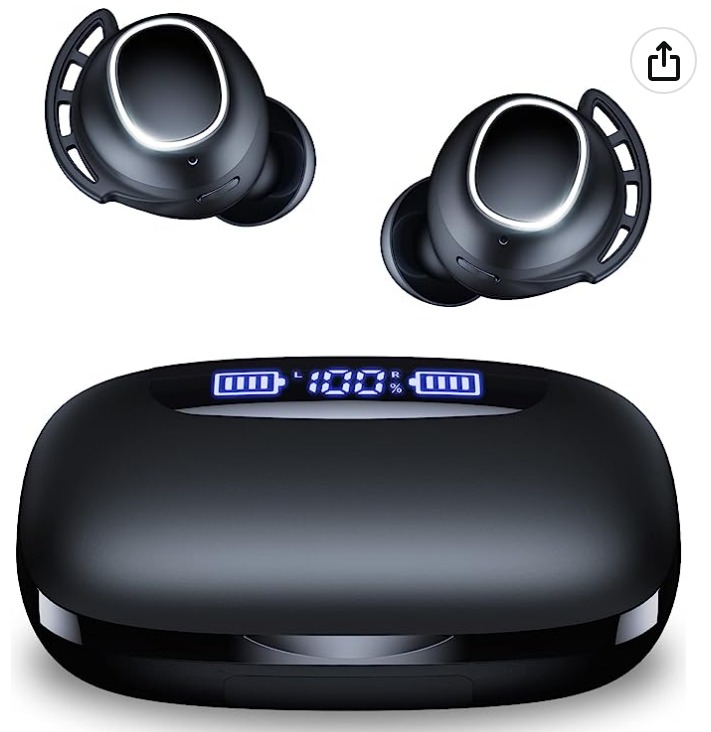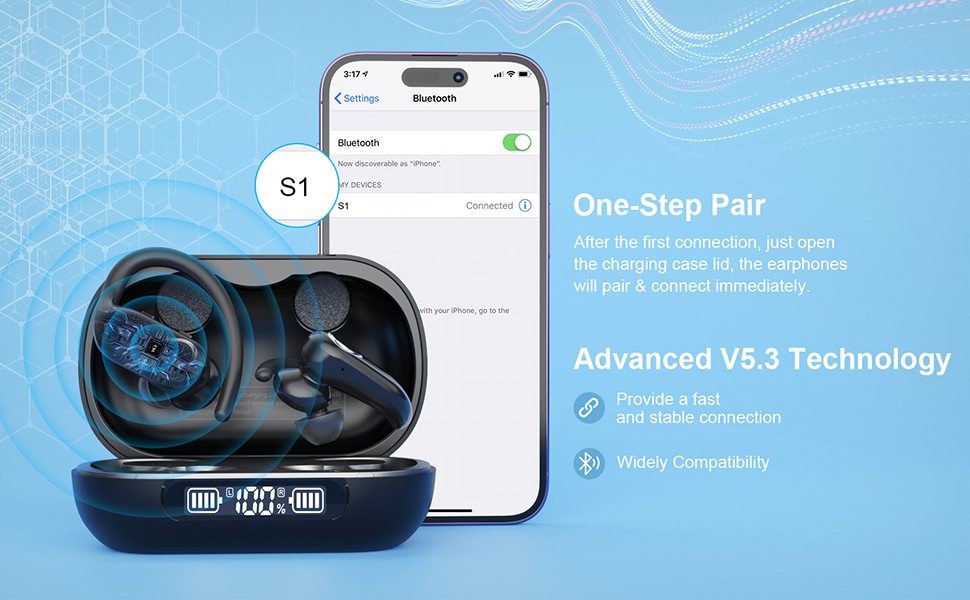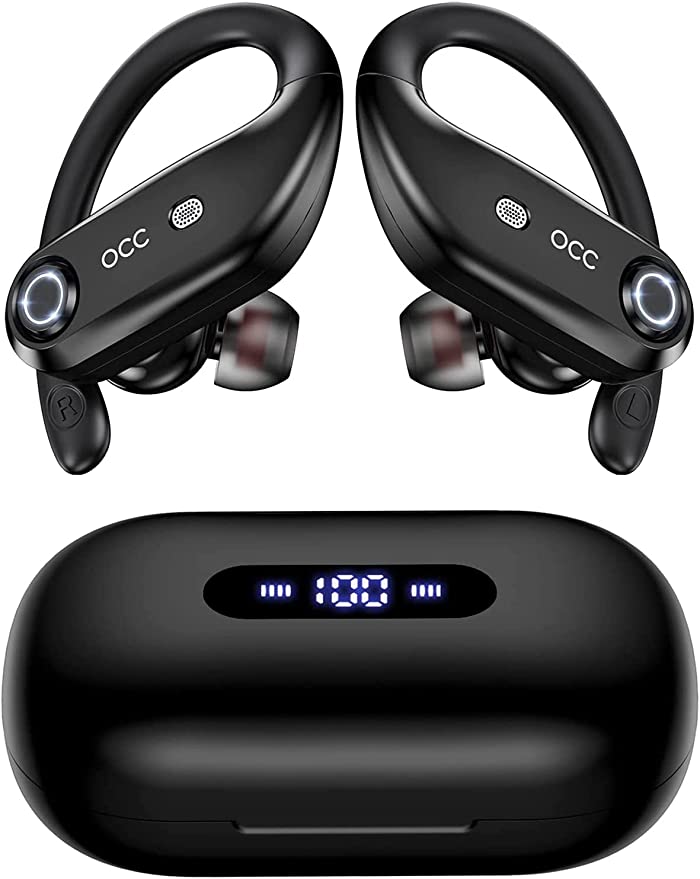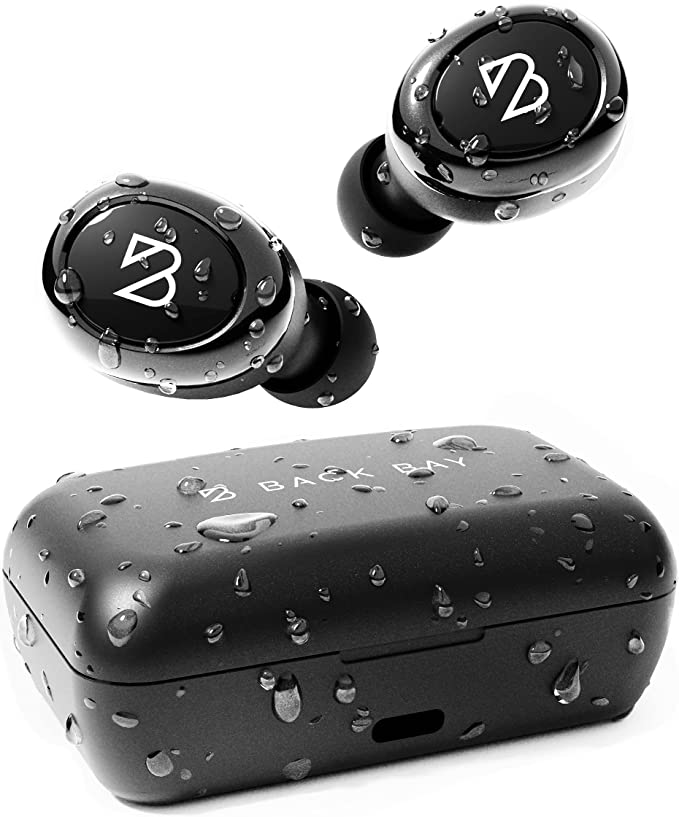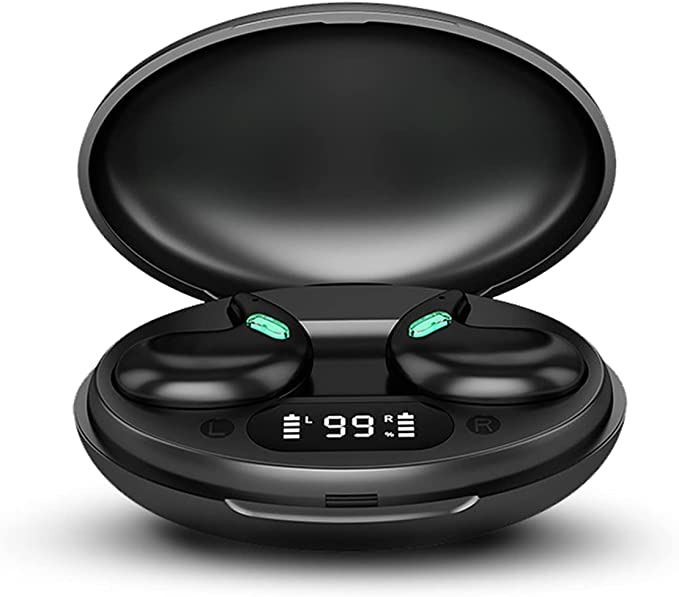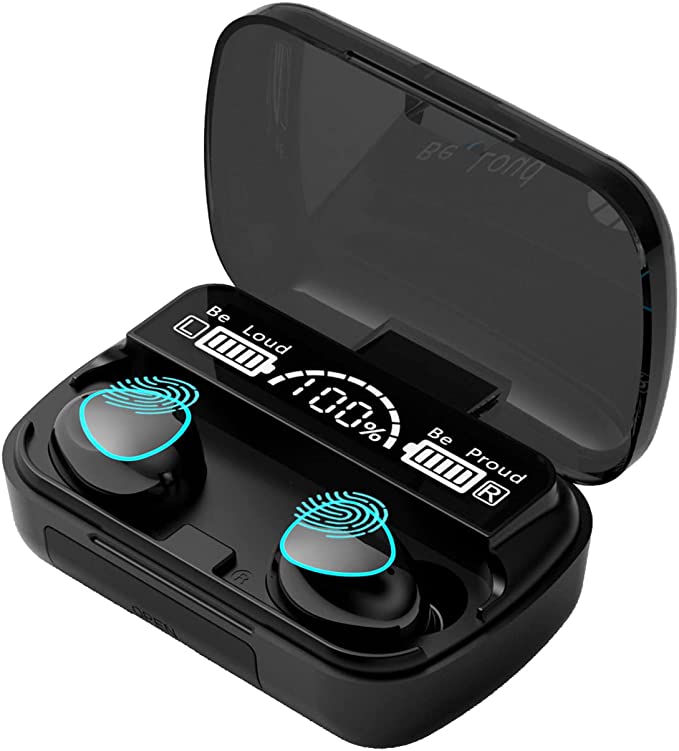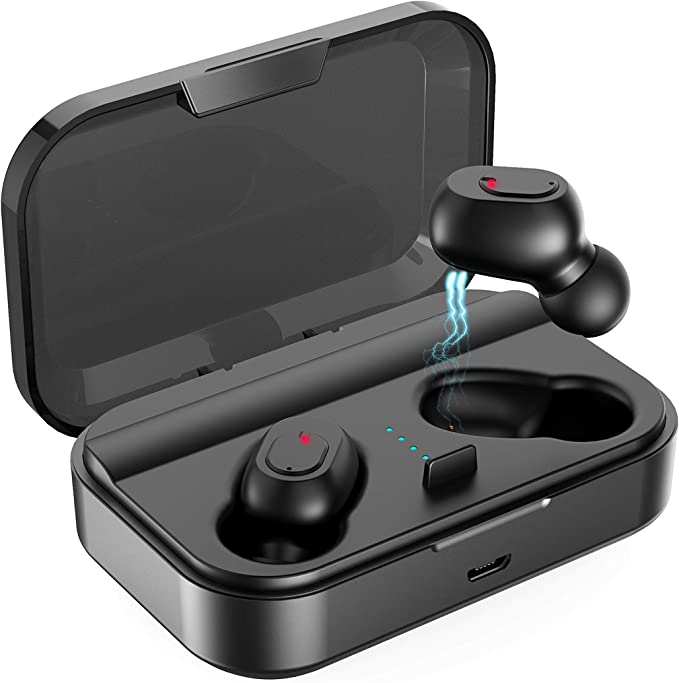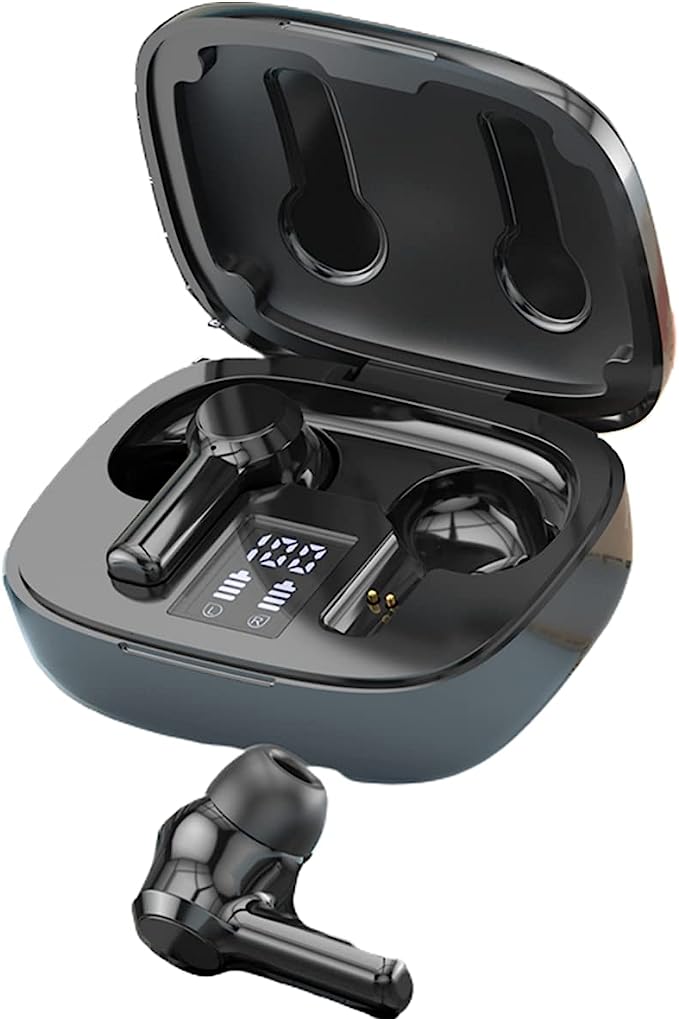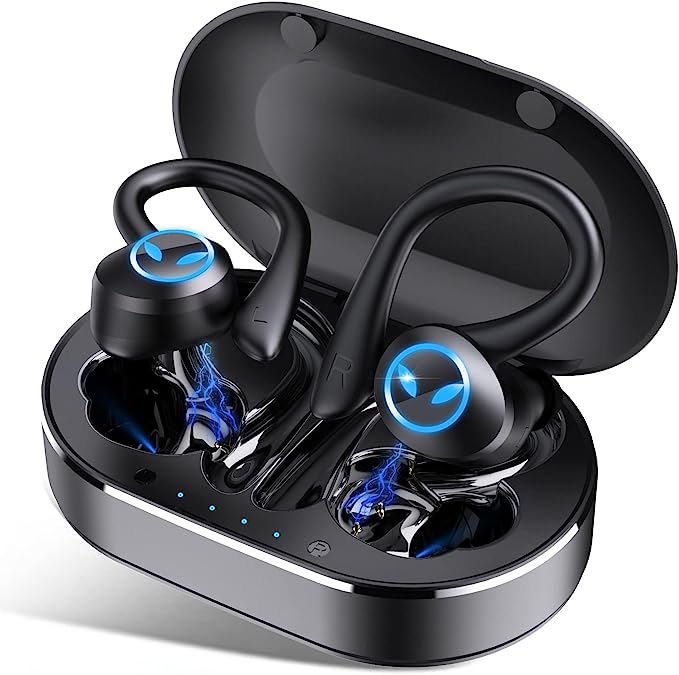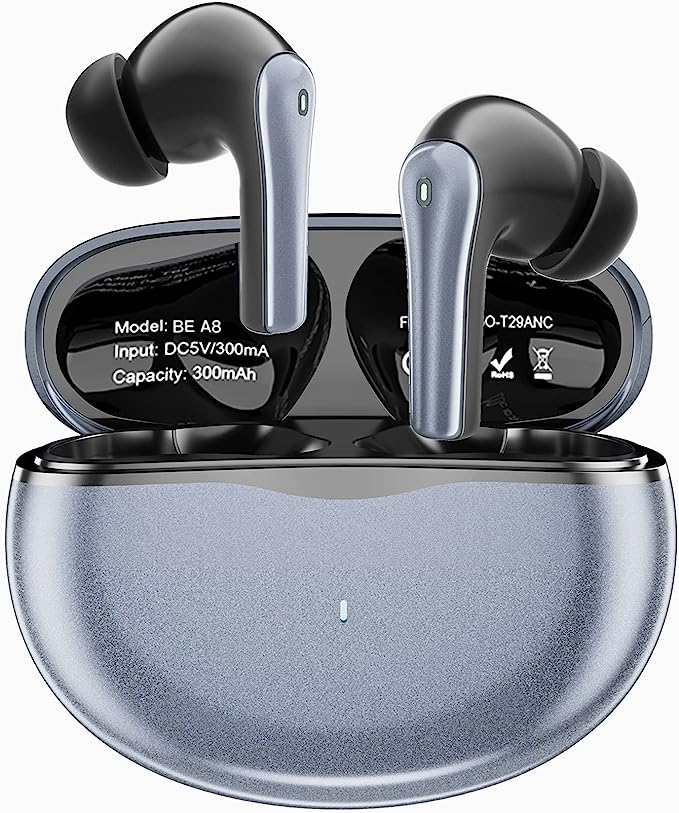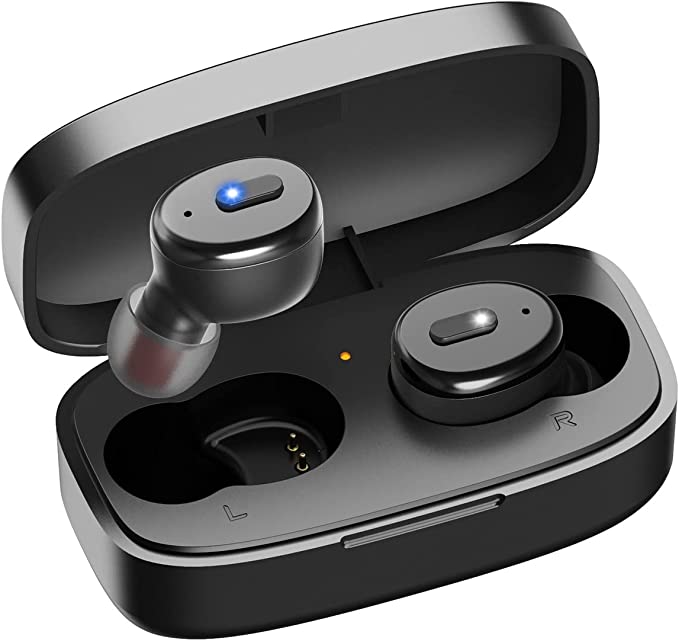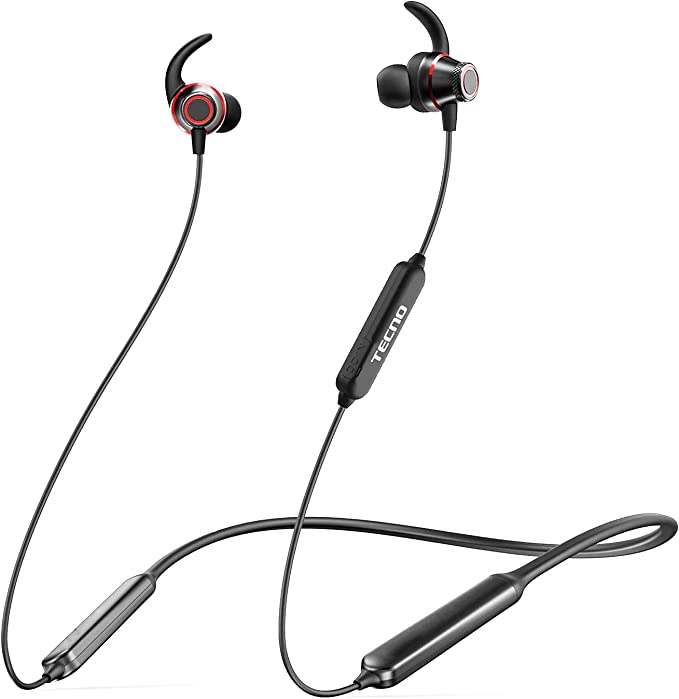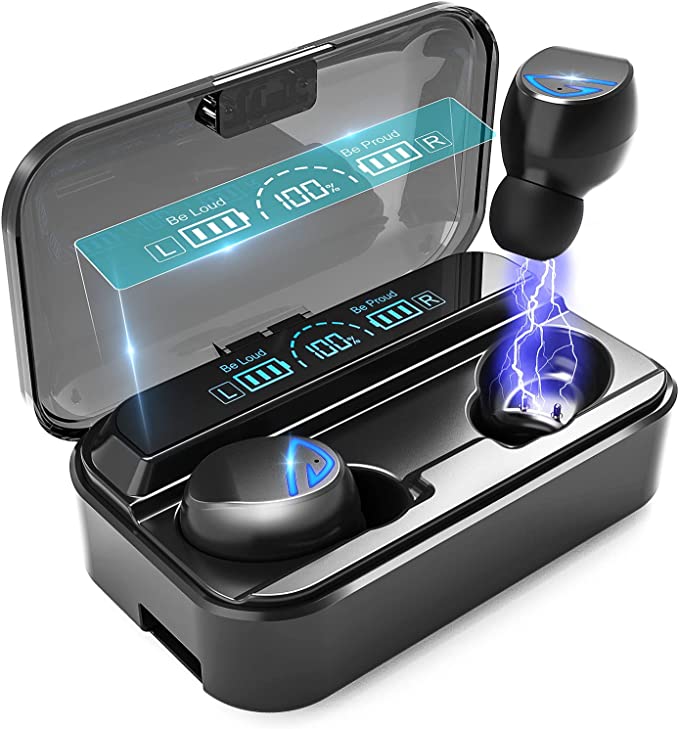Gemercy I35 Wireless Earbuds - The Wireless Earbuds with Endless Battery Life for Non-Stop Listening
Update on June 23, 2025, 2:24 p.m.
That dreaded low-battery chirp – it’s a sound that has abruptly ended countless playlists, podcasts, and important calls. In our always-on world, “battery anxiety” is a genuine concern, especially for the wireless earbuds that have become our constant companions. So, when a product like the Gemercy I35 Wireless Earbuds emerges, boldly claiming an almost mythical 100 hours of playtime from a single charge, it naturally piques curiosity. Is this just an inflated number, or is there some serious science and clever design at play? Let’s embark on a journey to unpack the technology that powers this audio endurance artist.

At the very core of the I35’s marathon performance lies its substantial 1000mAh (milliampere-hour) internal battery. Now, “mAh” is a term we see often, but what does it really signify? Think of it as the fuel tank of your device. A milliampere-hour measures electric charge, essentially telling us how much energy the battery can store and deliver over time. For context, many compact true wireless earbuds might house individual batteries of around 40-70mAh each, with their charging cases adding a few hundred more. The Gemercy I35, with its neckband design, enjoys a significant advantage: physical space. This form factor, while perhaps less minimalist than individual buds, allows for a much larger, unified power cell. This generously sized “energy reservoir” is the primary pillar supporting that impressive 100-hour claim. The manufacturer even suggests that with about 3 hours of daily use, these earbuds could potentially last an entire month before needing a recharge via their Type-C USB port, which itself takes about 3 hours to fully replenish the battery. This kind of longevity is a game-changer for frequent travelers or anyone who simply doesn’t want the hassle of daily charging. The underlying technology is typically a Lithium-ion or Lithium-polymer battery, the same reliable workhorses found in most modern portable electronics, prized for their energy density and relatively long lifespan.

However, a large battery is only half the equation for exceptional playtime; efficient power consumption is equally crucial. This is where Bluetooth 5.1, the wireless standard employed by the Gemercy I35, steps in. Each iteration of Bluetooth technology strives for improvements, and Bluetooth 5.1 brings enhancements in data transmission speed, connection stability, and, importantly for endurance, power efficiency. While the specifics can get quite technical, involving Low Energy (LE) protocols and optimized data packet handling, the upshot is that Bluetooth 5.1 can perform its wireless duties while sipping less power from the battery compared to older versions. This synergy between a high-capacity battery and an efficient wireless chipset is key to stretching out those listening hours. The I35 claims a stable connection up to 10 meters (or 33 feet), a standard range for Class 2 Bluetooth devices, which should be ample for most personal use scenarios, whether your phone is in your pocket or on a nearby desk. Furthermore, this Bluetooth version facilitates wide compatibility, allowing the I35 to pair with most Bluetooth-enabled devices across iOS, Android, and Windows ecosystems, a testament to the universality of Bluetooth standards. The product also mentions the ability to simultaneously connect to two devices, a feature often known as Bluetooth Multipoint, allowing you to, for example, listen to music on a tablet and seamlessly switch to take a call on your phone.

Of course, what good is long playtime if the audio experience itself isn’t enjoyable? The Gemercy I35 houses 10mm dynamic drivers, which the company states are about 20% larger than those found in “ordinary earphones.” How do these tiny components create sound? Imagine a miniature loudspeaker. A dynamic driver uses an electromagnet to vibrate a diaphragm—a thin, flexible membrane. These vibrations create pressure waves in the air, which our ears interpret as sound. Generally, a larger diaphragm has the potential to move more air. This increased air displacement can contribute to a more robust bass response and a fuller, more open soundstage. The I35 aims for “high-detail treble with superior clarity and bass response” with these drivers. Gemercy explicitly states their challenge is “offering to the end customers a professional sound much more affordable than with the other main brands.” This is a bold aspiration, as achieving truly “professional” sound involves a complex interplay of driver quality, diaphragm material, enclosure acoustics, and meticulous tuning – often a costly endeavor. While “professional” is subjective, the 10mm drivers suggest an effort to deliver a more impactful sound than what smaller, more budget-constrained drivers might offer.

Real-world listening also brings the challenge of audio-video synchronization, especially crucial for watching videos or gaming. The product information for the I35 claims “perfect audio and video synchronization while playing games.” However, it’s worth noting that Bluetooth audio inherently involves some latency due to encoding, transmission, and decoding processes. While Bluetooth 5.1 aims to minimize this, and various codecs (like AAC or aptX, though the specific codecs supported by I35 aren’t detailed in the provided text) offer different latency profiles, perfect sync across all devices and applications can be elusive. Indeed, one user review mentioned a noticeable lag when watching videos on a PC. This highlights a common aspect of wireless audio: performance can sometimes vary based on the transmitting device, the operating system, the application being used, and even wireless interference in the environment.
Beyond the core electronics, the Gemercy I35 incorporates several design features aimed at everyday usability and resilience. One such feature is its IPX5 waterproof rating. The “IP” stands for Ingress Protection, a standard (IEC 60529) that classifies the degrees of protection provided against the intrusion of solid objects (like dust) and liquids. In IPX5, the “X” means it hasn’t been specifically rated for dust ingress, while the “5” signifies protection against low-pressure water jets from any direction. In practical terms, this means the I35 should comfortably withstand sweat during an intense workout or getting caught in a light rain shower. However, it’s crucial to understand that IPX5 does not mean the earbuds are fully waterproof for submersion, so swimming with them is not advisable.

For convenience, the earbuds themselves are magnetic. When you’re not listening, you can simply click them together around your neck. This small but thoughtful application of magnetism helps prevent the dreaded cable tangle and reduces the chances of misplacing them when they’re not in your ears. The neckband itself is crafted from a lightweight, smooth silicone. This material is chosen for its flexibility, durability, and comfort against the skin, making it suitable for extended wear. The in-ear design, complemented by three included sizes of “EarWings” (eartips), aims to provide a secure and comfortable fit, which also contributes to passive noise isolation by creating a seal against some external sounds.
No modern headset is complete without communication capabilities. The I35 includes a built-in microphone for hands-free calls. The quality of built-in microphones in neckband headsets can vary, often depending on their placement relative to the user’s mouth and any noise-canceling technology employed (which isn’t specified here). The device also offers an “Incoming Call Voice Prompt,” announcing the phone number when a call comes in – a potentially useful feature in noisy environments or when your phone isn’t readily accessible. Furthermore, a double press of the power button activates your phone’s native voice assistant, be it Siri for iOS users or Google Assistant for Android users, allowing for voice commands to set reminders, get directions, or control music playback. Some users have noted the voice prompt having a distinct accent – one described it as “PowaOng” instead of “Power On” – which points to the nuances of Text-to-Speech (TTS) engine selection and the ongoing challenge of achieving universally neutral voice prompts in globalized products.
When we consider the collective user experience, as gleaned from the limited available reviews, the standout feature remains the battery life, which users like Jennifer and Gordon Scott have praised. Jennifer noted charging them only “every 3/4days” and them still being at “60%,” while Gordon Scott also rated battery life as “excellent.” This real-world affirmation lends significant weight to the 100-hour claim. Sound quality also received positive marks from some, like Gordon Scott, suggesting the 10mm drivers are delivering a pleasing experience for at least a segment of users.
Ultimately, the Gemercy I35 Wireless Earbuds present an interesting proposition, particularly for those whose top priority is to break free from the charging cable as much as possible. The science behind its remarkable playtime isn’t magic; it’s a calculated combination of a high-capacity 1000mAh battery, the inherent space advantage of the neckband form factor, and the power-saving attributes of Bluetooth 5.1. Coupled with practical features like IPX5 water resistance, magnetic earbuds, and a comfortable design, they aim to be a reliable audio companion for daily commutes, extended travel, study sessions, or light exercise. While challenges like achieving perfect audio-video sync across all platforms persist in the broader wireless audio landscape, and individual experiences with sound quality and voice prompts may vary, the I35’s core promise of enduring power is a compelling one in our digitally tethered lives. It stands as a testament to how thoughtful engineering can maximize a fundamental user need: the desire to just keep listening.
//:(version:20250612 001)
反思写作的不足(中文)
(列表形式更佳)
1. 用户反馈融合度: 虽然提到了用户反馈,但可以更深入地将反馈作为引子,去探讨更普适性的技术问题或设计考量,而不仅仅是简单陈述反馈内容。例如,音画不同步问题可以更深入地探讨蓝牙编解码器和延迟的普遍性。
2. “专家口吻”的生动性: 虽然努力避免了机械感,但在某些技术解释部分,还可以更“会讲故事”一些,使用更意想不到但贴切的比喻,让“专家”形象更鲜明。
3. 对“性价比专业音质”的探讨深度: 对Gemercy宣称的“挑战在于提供专业音质且更实惠”这一点的分析还可以更深入,比如讨论哪些环节可能妥协,哪些环节可能创新以达成此目标。
4. 场景化描述的丰富度: 虽然提到了通勤、运动等场景,但可以更具体地描绘用户在这些场景下,I35的特性如何解决他们的实际问题或提升体验,增强代入感。
5. 对负面反馈的建设性: 对于“PowaOng”语音提示,除了指出文化差异,还可以稍微引申一下对产品国际化本地化工作的建议或思考(点到为止)。
6. 结构上的小标题: 虽然要求不使用1/2/3级数字标题,但如果文章非常长,内部逻辑小节的划分(通过段落空行和主题句)需要非常清晰,确保长文的可读性。本次处理尚可,但仍有优化空间。
7. 结尾的升华: 结尾部分虽然总结了产品,但或许可以更富启发性一些,比如对颈挂式耳机在特定人群中的未来,或者对电池技术持续突破的展望。
8. 对“同时连接两台设备”的阐述: 提到了这个功能,但对其技术名称(Bluetooth Multipoint)和工作原理可以稍微展开一点点,增加科普价值。
9. 原创比喻的运用: 虽然努力使用比喻,但还可以追求更独特、更令人印象深刻的原创比喻。
10. 对产品未提及的参数的推测与说明: 例如音频编解码器,虽然资料未提供,但可以提及常见的SBC/AAC,并说明其对音质和延迟的影响,作为一种通用科普。
对提示词提出改进
(列表形式更佳,指导:…)
1. 角色扮演的“今日心情/性格”细化: 当前提示词的这类设定较为宽泛,如果能提供更具体的“情景”,比如“想象你正在为一个即将出远门的朋友推荐并解释这款耳机”,可能会让角色扮演更自然,语言风格也更容易把握。
2. “拓展相关内容(历史,科学,原理,故事等)”的引导性: 可以建议在特定技术点上(如电池技术、蓝牙发展)是否需要“简史回顾”或“趣味小故事”的标记,让AI能更主动地去构思这些丰富性元素。
3. 关于“用户反馈”的处理方式: 可以更明确地指示,是将用户反馈作为“论据”、“引子”还是“待解决的问题”来整合进科普内容,避免仅仅是罗列。
4. 对“生动性”和“原创性”的量化或示例: 这两个要求比较主观,如果提示词能提供一些“优秀生动科普片段”的示例(非竞品,纯粹风格参考),或者对“原创性”提出更具体的考察维度(如“至少提出X个不同于产品说明书的解读视角”),可能会更有帮助。
5. SEO元数据与正文融合的策略: 提示词要求“酌情融入”,但可以更具体化,比如“确保核心关键词在引言、核心技术阐述段落、总结中至少出现一次,并自然融入”。
6. “信息源限制”与“拓展资料”的平衡: 提示词要求引用公认权威信息,但有时产品资料本身很有限。可以明确在产品资料不足以支撑深度科普时,允许AI在哪些方面(如通用技术原理)进行更大幅度的“基于公认知识的合理推演和阐释”。
7. “避免机械式AI生成内容”的检查点: 可以提供一些AI容易出现的机械化表达的“负面清单”,让AI在生成时有意识地规避,比如避免过多重复特定句式、避免使用过于标准化的过渡词等。
8. 针对“不足之处”的反思引导: 当前的“反思写作的不足”是开放式的,可以提供一些具体的反思维度,如“本次科普在A技术点的解释深度是否达到预期?”“类比B是否足够贴切且原创?”
9. 对“创作思路导图”的利用: 提示词中包含了创作思路导图,可以在后续指令中明确要求AI“严格按照或部分参考之前规划的思路导图X分支进行创作”,增强规划与执行的一致性。
10. “文章长度别太短”的量化: 可以给出一个大致的字数范围或段落数量建议,帮助AI更好地把握篇幅。
